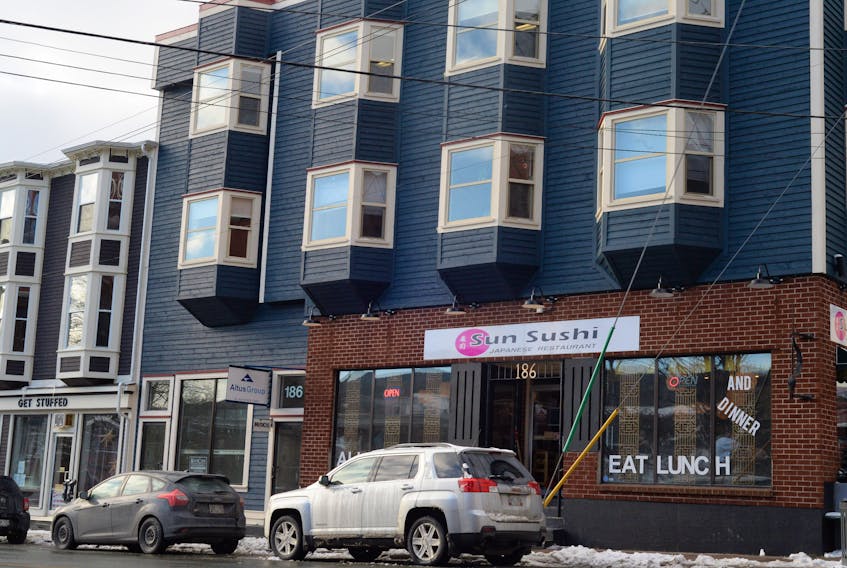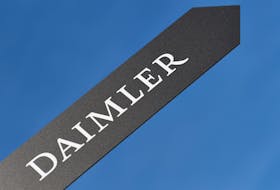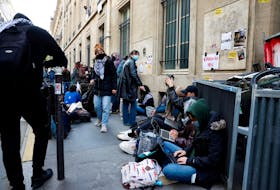Tuesday of this week marked 185 years since the House of Assembly in Newfoundland first met — at a tavern in a hotel on Duckworth Street in St. John’s owned by a woman named Mary Travers.
Travers, who welcomed the business and influx of the well-to-do members of society to the spacious and cosy establishment, would go on to make her mark on the province’s history much more forcefully than those sitting in that fledgling government gathering.
Travers’ hotel was located at King’s Place near present-day Duckworth Street, opposite the site of the National War Memorial. The tavern was first selected in November 1832 as the only polling station for St. John’s for the election of members to the first House of Assembly.
According a history column published in The Telegram in 1998 by Bert Riggs, who at the time was an archivist with the Centre for Newfoundland Studies at Memorial University, hustings (meetings where candidates addressed and tried to win over potential voters) were held outside the hotel on Nov. 6, 1832.
“It was at this site, on hustings erected in front of the hotel, that the candidates gathered on Nov. 6 and made their election speeches to the attendant crowd,” Riggs wrote. “The candidates then took their supporters inside in groups of 10, where each man cast his ballot by announcing to all assembled the name of the person he was voting for.
“Mary Travers’ hotel must have been a fairly large building, for the election was no sooner over than it was announced that it would be the site where the legislature would meet, as the courthouse was felt to be too small to accommodate the members.”
After that initial meeting on Jan. 2, 1833, the House of Assembly met almost daily in the tavern for the next five months. And while the first orders of business were being hashed out, and the voices of the debaters filled the hotel’s largest space, Travers — who had hired extra servants and used more coal and wood than she normally would — waited patiently for the rent she was owed.
But during those five months Travers had not been paid a cent for the use of her hotel, and there was no indication the money was forthcoming.
“The House of Assembly made no provision for paying Mary Travers for the use of her premises. It claimed payment for a meeting place for the assembly was the responsibility of the British Treasury,” Riggs wrote.
In July 1833, Travers ended up, in her own building, having to petition the House of Assembly for payment of rent owed. The petition seemed to fall on deaf ears.
But Travers was no pushover. She had had enough.
She went to the court and obtained a court order kicking the members out of her hotel and at the same time confiscated the Speaker’s chair and hat, the mace, several desks and certain government papers that had been left at her hotel when the assembly prorogued.
She threatened to sell the items at auction if she did not get the money she was due.
In fact, it was reported that Travers had advertised the Speaker’s chair in a local newspaper as being “elegantly upholstered and finished in black moreen and ornamented with brass.”
With no place to go, the members moved the legislature to the courthouse for the next session.
“One of its first acts there was to attempt to get its property back from Mrs. Travers,” Riggs wrote.
According to an excerpt from the Women’s History Walking Tour Booklet (which was funded by the national office of the Status of Women in the 1990s) on the Heritage Newfoundland and Labrador website, Travers had been summoned before the bar of the House and “threatened with the most dire punishments unless she relented and released the furniture. She laughed at their threats and told them flatly, ‘no rent, no furniture.’ The furniture and papers were eventually recovered by the government after a new order was passed by the legislature for payment of the rent. There is no record of Mrs. Travers receiving payment for her services.”
Riggs also noted that Travers “refused to return anything without payment, so the assembly asked the governor, Sir Thomas Cochrane, to intercede. He asked the attorney general to take the necessary steps to retrieve the property, and tried to arrange to have her paid the money she was owed.
“Cochrane submitted a claim to the British Treasury, dated Feb. 25, 1834, for expenses incurred in establishing the Newfoundland legislature. It included two payments to Mary Travers: 85 pounds, 13 shillings, four pence for the use of furniture, coal, wood, candles, services and hire of servants; and 108 pounds, six shillings, eight pence for rental of her premises.
“These amounts, together with several other expenses claimed, were rejected by the Treasury. Cochrane (in November 1834) then ordered that these accounts be paid from the Military Chest, but there is no indication that they were, as Mary Travers again petitioned the House of Assembly for payment in February 1835.”
Riggs noted there exists further evidence that she was not paid, or at least not paid in full.
Most of the House of Assembly items, it appears, were eventually returned by Travers, though it seems she never did receive the full amount she was owed.
“Travers continued to operate her hotel, but eventually left St. John’s, perhaps as a result of the destruction of her property in the fire which swept the town in 1846,” Riggs wrote. “She went to live in Kildare, Prince Edward Island, where she died, after a long and painful illness, on Feb. 24, 1854.”
Travers had never given up fighting for the rightful amount she was owed.
Riggs said records indicate her last attempt to obtain the full payment of what was owed to her actually arrived at the House of Assembly — ironically, a place to debate and pass laws to protect citizens of the province — as a petition following her death.
The petition from her was read in the House of Assembly on April 18, 1854, which stated in part that “praying that compensation may be made her.”









